Design of intelligent home air conditioning control system
The 21st century is an information age, and various telecommunications technologies have promoted the development of human civilization. It is precisely because of the development of communication technology, computer technology, network technology and control technology that the family has realized a more modern lifestyle and a more comfortable and safe living environment. The functions of the smart home control system mainly include communication, automatic control of equipment and security. With the development of new technologies and automation, the use of sensors is getting larger and larger, and the functions are getting stronger and stronger. The emergence of various standardized sensor modules has facilitated the design of smart home control systems. In addition to the traditional control of air conditioners through remote control buttons, the intelligent home air conditioning control system also incorporates modules such as Bluetooth and temperature sensors.
The mobile phone launch command directly controls the air conditioner to realize remote control and automatic control of the smart home system.
1 system overall design and control principle
The smart home air conditioning control system controls the air conditioner in two ways, one is the traditional remote control button mode, and the other is to transmit commands through the mobile phone Bluetooth. The system consists of MSP430 MCU, temperature sensor, infrared module, Bluetooth module, etc. The MSP430 MCU is the main controller of the system. It is responsible for parsing the signals transmitted by the buttons and Bluetooth and making relevant responses. The temperature sensor is used to sense the external temperature. The temperature range is 20~26°C. When the temperature is within this range, the system can automatically turn off the air conditioner according to the set program. When the temperature is not within this range, the system can turn on the air conditioner and control the air conditioner by pressing the button or Bluetooth. Various modes, when the temperature is not in this range, the automatic control mode can also be set, the system will automatically turn on the air conditioner and automatically adjust the temperature according to the external temperature, without manual opening; the infrared module controls the air conditioner according to the response signal of the single chip; the Bluetooth module Receive commands transmitted by the phone and transmit them to the microcontroller. The overall block diagram of the system is shown in Figure 1.

1.1 Infrared control principle
The basic precondition for the infrared signal to function is to transmit infrared light between the infrared sensor and the air conditioner. The infrared light is located in the invisible part of the electromagnetic channel, and the infrared control is to transmit the control by using near-infrared light with a wavelength between 0.78 and 1.4 μm. Signal, as shown in Figure 2.
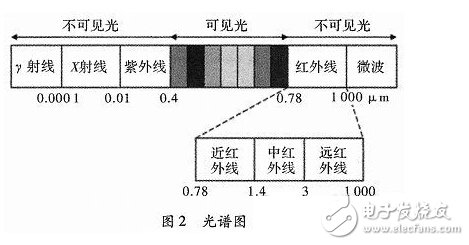
Infrared control is mainly composed of two parts: transmitting and receiving. At present, most home appliances use infrared integrated receivers to receive infrared signals. The transmitting end of the system uses the MSP430 MCU to encode and modulate the binary signal to be transmitted into a series of pulse train signals, and send the infrared signal through the infrared transmitting tube; the infrared integrated receiving head built in the air conditioner receives the infrared signal, and simultaneously amplifies and detects the signal. The shaping obtains the encoded signal of the TTL level, and then sends it to the single chip microcomputer, and decodes it by the single chip microcomputer and makes a relevant response. The transmission and reception diagram is shown in Figure 3.
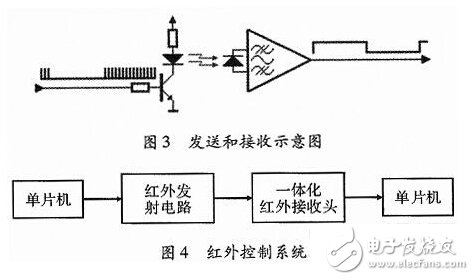
1.2 Bluetooth control principle
Bluetooth is a low-power wireless technology. Bluetooth technology is designed to wirelessly connect smart mobile phones to laptops, PDAs, and external devices for digital information, replacing PCs, printers, fax machines, and mobile devices. A wired interface on a device such as a telephone, thereby forming a personal network, so that various informatized mobile portable devices can seamlessly share resources within a reachable range. Bluetooth has strong mobility and can be used in a variety of communication applications. Bluetooth wireless transmission is carried out over an RF (2.4 GHz) carrier with low power consumption and fast transmission speed, allowing simultaneous connection to multiple systems. There is no need to set up with Bluetooth technology. As long as two Bluetooth devices enter each other within the connection range allowed by the wireless level, the Bluetooth protocol will automatically scan and detect, realize connection and exchange information. The Bluetooth devices used in the system are the Bluetooth module and the mobile phone respectively. The Bluetooth module is powered by 3.4 V. After the two are connected, the mobile phone can transmit signals to the Bluetooth module through the Bluetooth serial port software within a certain distance, and then realize the control through the single chip analysis. air conditioning.
2 system hardware and software design
2.1 Hardware Part
The system hardware system is mainly composed of MSP430 single-chip microcomputer, infrared module, bluetooth module and temperature sensor module. The system uses MSP430F149 as the main controller. This type of single-chip microcomputer has the advantages of high reliability, low power consumption, flexible expansion, small size, low price and convenient use. It is widely used in instrumentation, intelligent management and process control of special equipment. The ground improves the control quality, which is responsible for the reception of the Bluetooth signal and the corresponding command to the infrared module; the infrared module mainly transmits the infrared signal after receiving the command to control the switch of the air conditioner; the Bluetooth module acts as a space between the mobile phone and the single chip microcomputer. The signal relay station, the Bluetooth module receives the command sent by the mobile phone, and transmits it to the single chip microcomputer, and then the single chip computer analyzes the Bluetooth signal; the temperature sensor is used to sense the external temperature, and the set temperature range is 20 to 26 ° C, when the temperature is not in this In the range, the system can control the air conditioner by pressing the button mode or setting the automatic control mode and the Bluetooth mode. The overall connection circuit diagram of the system is shown in Figure 5.
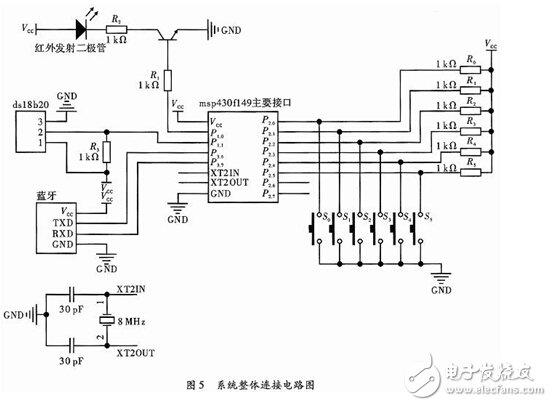
The system controls the beautiful brand air conditioner. Therefore, the US brand remote controller needs to be decoded. The remote controller decoding is shown in Table 1.
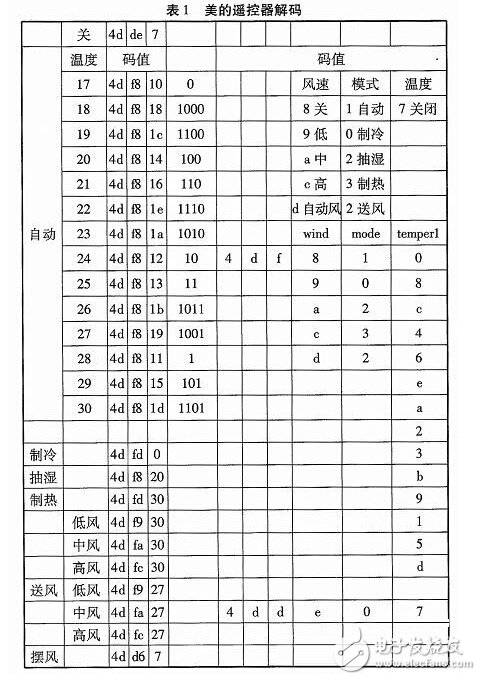
2.2 Software Design
The software of the system is mainly composed of two parts, namely the reception of Bluetooth signals and the transmission of infrared signals. The software program design flow is shown in Figure 6.
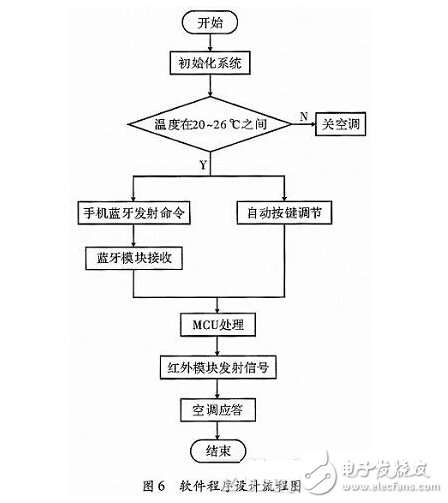
3 system debugging and implementation
3.1 Bluetooth module receives debugging of mobile phone commands
The Bluetooth module is powered by a 3.4 V power supply. After the mobile phone turns on the Bluetooth and matches the Bluetooth module, the Bluetooth serial port software of the mobile phone sends commands to the Bluetooth module, such as "on", "off", "automatic", "+", "-", etc. If it can be sent normally, it indicates that the Bluetooth module can receive the command normally, and the working state is normal; otherwise, the Bluetooth module works abnormally, and the Bluetooth module needs to be re-commissioned.
3.2 Debugging of infrared module and temperature sensor
The infrared module and the temperature sensor are connected, and the two are connected to the MSP430 single chip through the serial port. The temperature sensor is set to a temperature range of 20 to 26 ° C. When the temperature is within this range, the system will automatically turn off the air conditioner according to the setting procedure; when the temperature is not within this range, the system can turn on the air conditioner through the button mode or the mobile phone Bluetooth mode. And control the various modes of the air conditioner, when the temperature is not in this range, you can also set the automatic control mode, the system will automatically turn on the air conditioner and automatically adjust the temperature according to the outside temperature, no need to manually open. At room temperature, if the air conditioner can be controlled by the button mode and the Bluetooth mode, it indicates that the infrared sensor and the temperature sensor can normally sense the outside temperature and emit the infrared signal, and the working state is normal; otherwise, the infrared sensor and the temperature sensor are in an abnormal state, and need to be restarted. debugging.
3.3 System overall debugging and experimental results
The first way of working is to debug the air conditioner by pressing the button. First press the set air-conditioner button. If the air conditioner starts normally, continue to the next step: press the plus temperature button (or decrease the temperature button, automatic mode button, etc.). If the air conditioner can execute the commands corresponding to these buttons, it indicates The first control method can be implemented, otherwise it needs to be re-commissioned.
Debug the second way of working, that is, control the air conditioner through the mobile phone. First send the "on" command on the Bluetooth serial port software of the mobile phone. If the air conditioner starts normally, proceed to the next step: send "+" (or "-", "automatic", etc.). If the air conditioner can execute these commands, it indicates that the air conditioner Two ways can be achieved, otherwise it will still need to be re-commissioned.
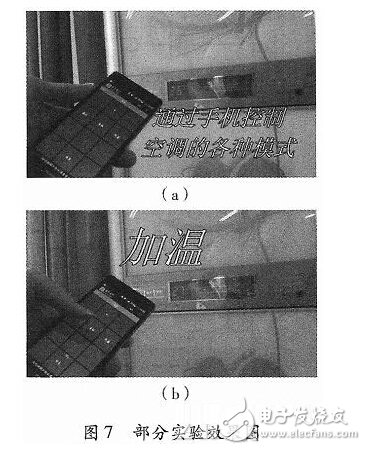
Through the above debugging and testing, the system realizes the functions of start-stop control, temperature rise control and automatic control of the air conditioner. The air conditioner can be controlled by two buttons: button and mobile phone. Part of the experimental renderings are shown in Figure 7.
4 Conclusion
The system combines the technology of single chip microcomputer and infrared transmission, Bluetooth communication, etc., and uses MSP430 series single chip microcomputer as the main controller, making full use of the advantages of low power consumption and rich resources of the series of single chip microcomputers, combined with infrared module and bluetooth module, applied to air conditioning control. Expanded the level of intelligence in home control. The system architecture has broad application prospects in the field of smart home control and services. The next step is to integrate the Internet of Things technology.
Integrated Street Light,Outdoor Street Light,Solar Street Lights,Solar Landscape Lighting
t-smartlight , https://www.t-smartlight.com